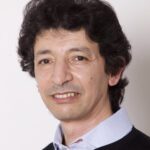Link to Pubmed [PMID] – 9361262
Link to HAL – pasteur-04036423
Link to DOI – 10.1002/(SICI)1097-0029(19971015)39:2<98::AID-JEMT2>3.0.CO;2-S
Microscopy Research and Technique, 1997, Special Issue: Functional Anatomy of the Pituitary Gland and Alterations in Disease, 39 (2), pp.98-113. <a target="_blank" href="https://dx.doi.org/10.1002/(SICI)1097-0029(19971015)39:23.0.CO;2-S">⟨10.1002/(SICI)1097-0029(19971015)39:23.0.CO;2-S⟩
Classically, it was thought that the adenohypophyseal gland originated from the oral ectoderm. Its development has been the object of numerous studies over many years. However, several questions are still raised about its origin, differentiation, and commitment. The adenohypophyseal gland could originate from the anterior ridge of the neural plate. Glandular adenohypophyseal cells are committed very early in embryonic life. Interactions between adenohypophyseal presumptive territory and neighboring tissues can exist very soon, as early as at the open neural stage. The expression of a given phenotype by the committed cells seems to be controlled by a number of differentiation and/or transcription factors. In view of all these studies, performed with the use of different in vivo and in vitro models, classical concepts of the embryology of the adenohypophyseal gland need to be reevaluated. Indeed, many questions remain unanswered concerning the molecular mechanisms of known and unknown factors controlling development of the adenohypophyseal gland.

